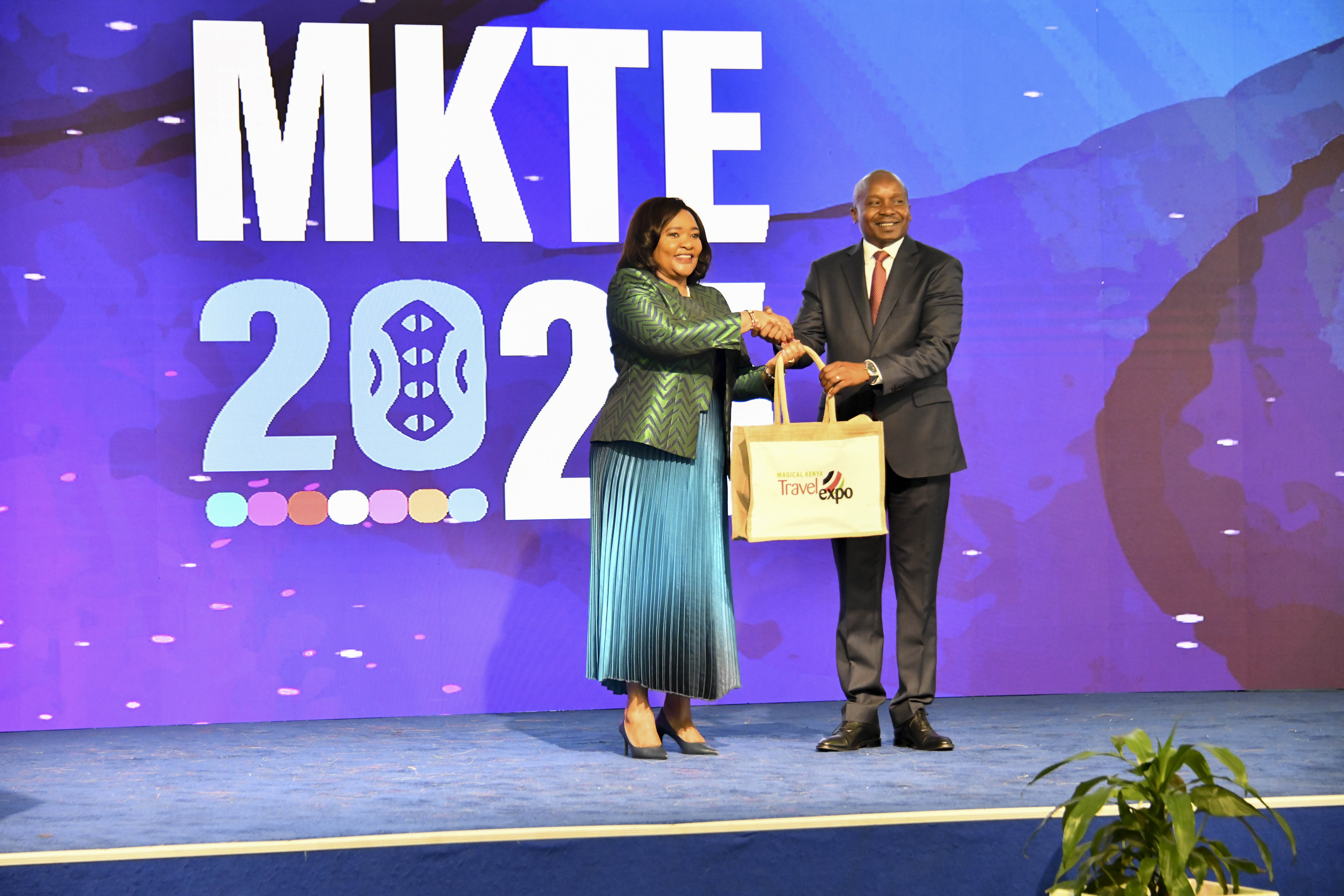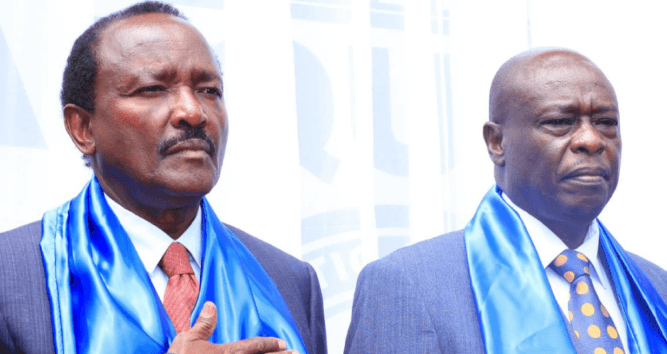
 Tourism & Wildlife CS Rebecca Miano gifts Deputy President Kithure Kindiki at the Magical Kenya Travel Expo (MKTE) 2025. /DPCS
Tourism & Wildlife CS Rebecca Miano gifts Deputy President Kithure Kindiki at the Magical Kenya Travel Expo (MKTE) 2025. /DPCSKenya is banking on intra-African tourism to unlock a projected Sh1.2 trillion contribution to the economy by 2027.
The strategy, which seeks to position tourism as a central pillar of growth, targets Sh1 trillion from opportunities within the African Continental Free Trade Area (AfCFTA) over the next two years.
Deputy President Kithure Kindiki said the country must shift its focus to continental integration to sustain growth beyond its traditional reliance on Western and Asian markets.
He was speaking at the opening of the 15th edition of the Magical Kenya Travel Expo (MKTE) at Uhuru Gardens on Thursday, October 2.
“Tourism is a critical anchor of Kenya’s economy and a pillar of our Bottom-Up Economic Transformation Agenda (BETA). With Africa emerging as one of the strongest-performing regions in global tourism recovery, we must capitalise on AfCFTA opportunities," Kindiki said.
"The tourism sector must become a critical interlocutor in transport, logistics, trade, investments and MSME sectors, driving synergised policy outcomes,” he added.
According to the World Travel and Tourism Council (WTTC), Kenya’s tourism sector is projected to inject Sh1.2 trillion into the economy, equivalent to more than 7 per cent of GDP, while supporting 1.7 million jobs in 2025 – accounting for over 8 per cent of national employment.
The DP cited flagship infrastructure projects to strengthen the sector, including the Nairobi-Nakuru-Mau Summit Highway, expansion of the Standard Gauge Railway, Lamu Port development, and new direct flights from global hubs.
He also called for diversification into emerging products such as astro-tourism, desert safaris in Chalbi, and tech-tourism driven by Kenya’s “silicon savannah” reputation.
“We must market the complete Kenya story – from our technological innovation to our athletic excellence, from the Cradle of Humankind to our forty vibrant communities,” he said.
Sustainability remains a priority, with Kindiki linking the government’s national tree-planting programme to eco-tourism while emphasising that local communities must directly benefit from tourism gains.
The expo has attracted more than 6,500 delegates from 40 countries, including 400 exhibitors and 200 international buyers, underlining its status as a continental hub for tourism business.
Tourism and Wildlife Cabinet Secretary Rebecca Miano said MKTE had evolved into a vital marketplace for unlocking investment flows.
She noted that Kenya’s target of 5.5 million visitors by 2027 hinges on stronger public-private partnerships (PPPs).
“Infrastructure development through public-private partnerships remains our cornerstone strategy. By leveraging private sector expertise and government support, we are building world-class facilities that enhance visitor experiences while creating sustainable employment for our communities across the tourism value chain,” Miano said.
Emily Mburu, Director of Trade in Services, Investment and Digital Trade at the AfCFTA Secretariat, highlighted the role of tourism in advancing continental integration.
“Tourism shows how AfCFTA works in practice. Public-private frameworks attract Foreign Direct Investment, build world-class infrastructure and create employment across borders. When tourists move seamlessly across Africa, they activate supply chains, stimulate trade and prove that integration delivers immediate, tangible benefits to African economies,” Mburu noted.
Rising intra-African demand Africa has become an increasingly important source of arrivals for Kenya, contributing 40.8% of international visitors in 2024.
Officials said the trend highlights the potential of intra-African tourism in driving resilience and reducing reliance on long-haul markets.
This year’s expo has introduced digital matchmaking technology to facilitate pre-scheduled B2B meetings between buyers and sellers.
It also features five-day familiarisation trips, integrated marketing campaigns, and dedicated sessions on the creative economy’s role in tourism.
As Kenya sharpens its focus on AfCFTA-driven opportunities, the government is betting on tourism’s capacity to deliver both growth and sustainability.
With projections pointing to Sh1.2 trillion in economic value within two years, tourism is being positioned as one of the country’s strongest engines of transformation.










![[PHOTOS] Ruto launches Rironi-Mau Summit road](/_next/image?url=https%3A%2F%2Fcdn.radioafrica.digital%2Fimage%2F2025%2F11%2F6f6601a6-9bec-4bfc-932e-635b7982daf2.jpg&w=3840&q=100)




